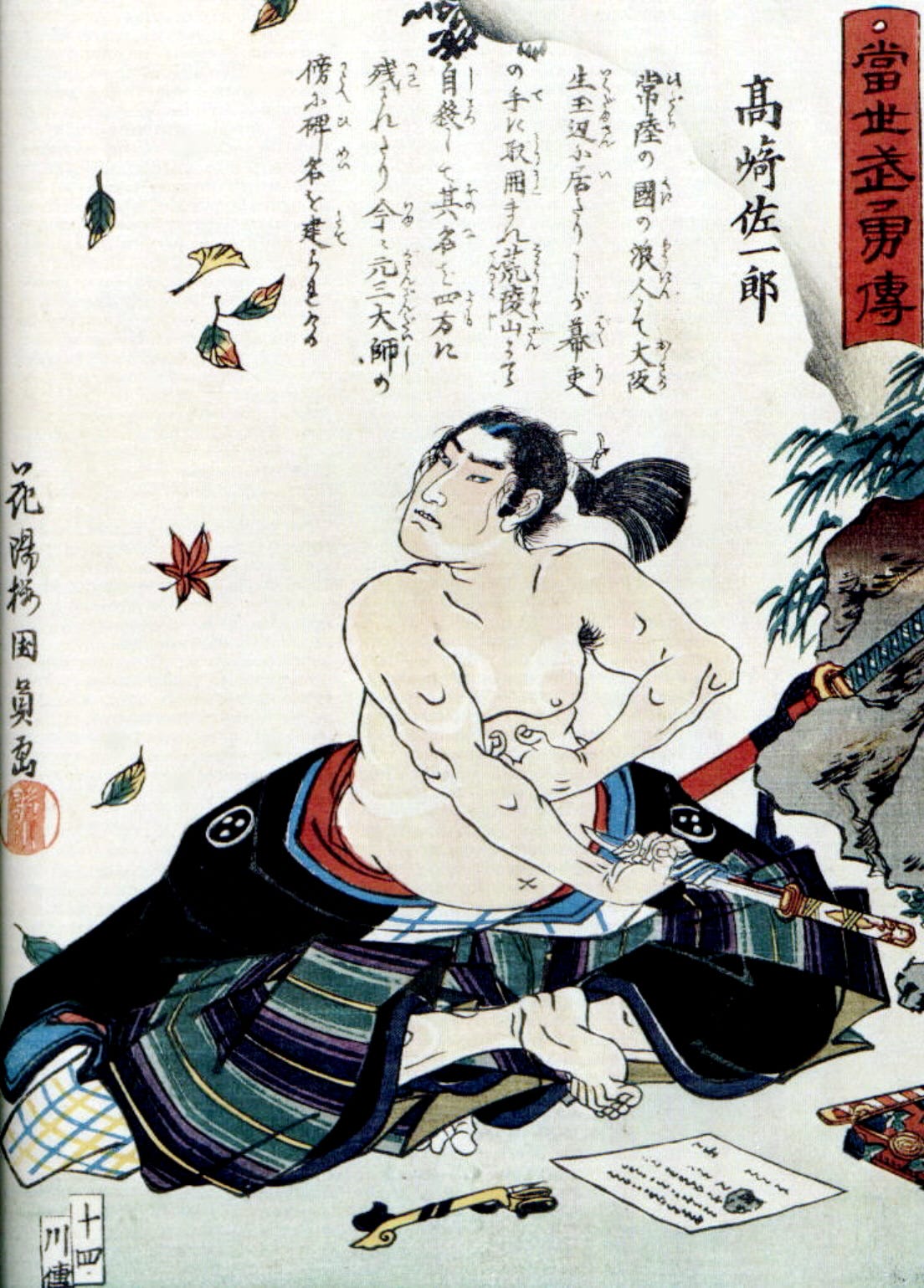Mishima. Part 1.
Talent and self-destruction.
Trigger alert; violence, blood and suicide right from the start.
From his kneeling position Mishima Yukio managed to plunge the twelve inch straight-bladed yoroidoshi dagger into the left side of his abdomen, and then with single-minded determination and through waves of extreme agony he continued the horizontal cut. Morita, his faithful student had agreed to act as Mishima’s kaishakunin (the one given the task of mercifully ending the pain with a single stroke of the katana 1). But Morita’s nerve wobbled as things did not play out as he had envisioned them.
His beloved leader was doubling over in pain with his shoulders hunched. Morita had hesitated too long and now the clear target of the back of the neck was no longer available for the coup de grâce that was necessary to end Mishima’s suffering. He bodged it. Clumsily, he still tried to cut, which inflicted more damage. It was only when another student, Chibi-Koga, a much more superior swordsman, took the 16th century Seki no Magoroku sword from the traumatised Morita’s fingers that the final cut was delivered. Mishima Yukio was dead.
This is not a tale from the later 1600’s feudal Japan; this event took place 25th of November 1970 as Mishima and his protégés took General Mashita hostage in the military headquarters in Tokyo and attempted a coup d’état.
Incidentally, Morita instantly chose to join his revered leader in death, and Chibi-Koga again, swiftly got the job done.2
Who was Mishima Yukio?
That very same morning Mishima Yukio, a world-famous author, had placed a chunky envelope on the table at his home. This contained the final instalment of his mammoth masterpiece novel, ‘The Sea of Fertility’ a project six years in the making.
Mishima by Ken Domon - https://unregardoblique.com/2018/02/04/ken-domon-yukio-mishima-1955/, Public Domain, https://commons.wikimedia.org/w/index.php?curid=163969377
He knew the coup was doomed for failure. At one level this was pure theatre, but more deeply Mishima was concocting a drama of a very Japanese nature, one that has continued to rumble forward in time. Some would say that it was the logical conclusion of his life.
The beginnings.
Mishima Yukio, was born Hiraoka Kimitake in 1925 in Nagazumi-cho, Yotsuya-ku, Tokyo. His father was a government official, but, through his grandmother he was descended from the very noble line of Tokugawa Ieyasu, the founder of the Tokugawa Shogunate.
It was this very same grandmother who was his main carer in his infant years and through her eccentric and severe discipline, probably planted the seeds of his extreme focus on death and honour. (He was not allowed to be out in sunlight and forbidden to play sports with other boys, all he had was to play ‘dolls’ with his female cousins). One biographer suggests that Mishima’s grandmother was suffering from the neurological effects of advanced syphilis (something bestowed on her by her wayward husband). This may account for some of her erratic behaviour.
The psyche of the young impressionable Kimitake was further stretched almost to breaking point when he was returned to his father’s ‘care’ at the age of twelve, who sought to make a man out of him. It was never going to work. Kimitake was going to find his particular brand of masculinity much later in life, and through the adopted persona of ‘Mishima Yukio’.



